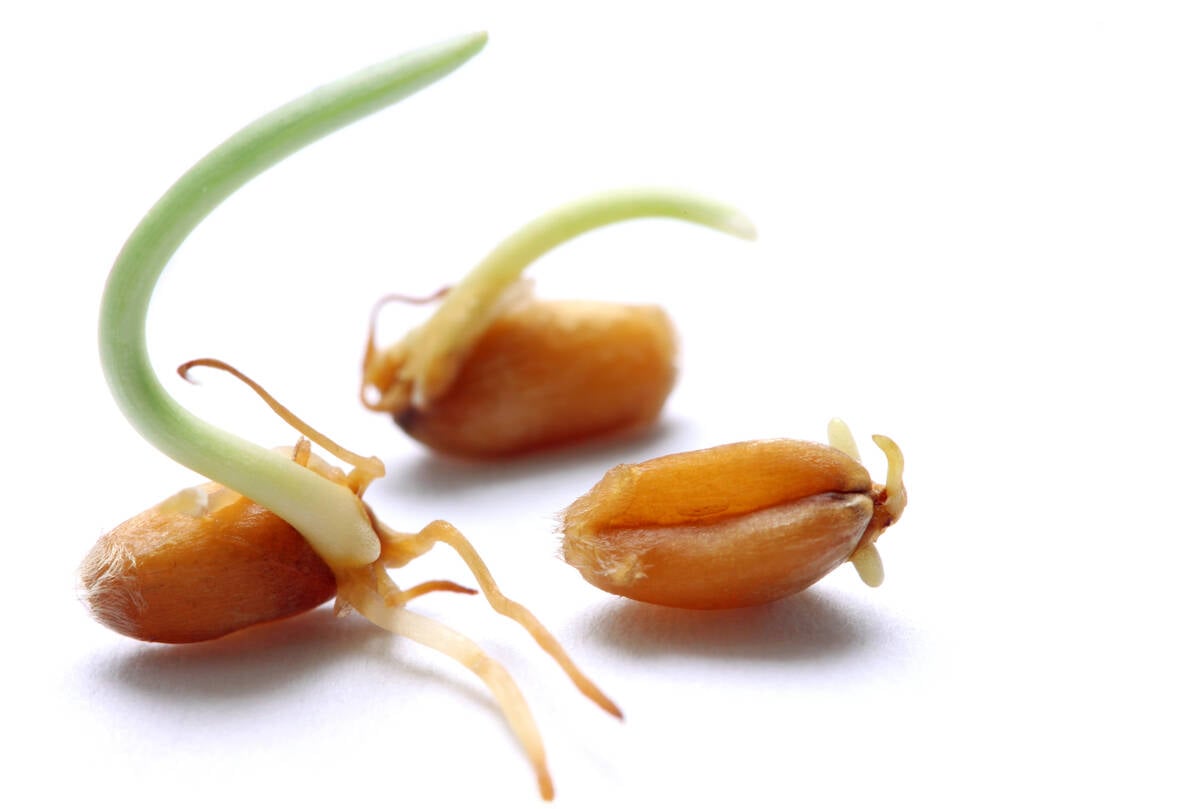Manitoba farmers will be able to insure a crop this spring that has risen from relative obscurity to the latest seeding option.
Last week, the Manitoba Crop Insurance Corporation announced it will sell insurance for soybeans because of interest from farmers.
“There was quite a few acres in ’97 and they’re talking about as many as 20,000 (acres), so we hear, in ’98,” said corporation spokes-person Brian Halstead.
Last spring farmers planted between 6,000 and 10,000 acres of the crop, he said. The corporation used to insure soybeans, said Halstead. But by 1991, few farmers were growing it.
Read Also

Manitoba farmers fight sprouted wheat after rain
Rain in mid-September has led to wheat sprouting problems in some Manitoba farm fields.
More soybeans planted
The new insurance will apply to more than a dozen varieties but only in an area running northwest from Morris to Gladstone.
“It takes an awful lot of heat units to grow it,” explained Halstead.
Farmers who grow common alfalfa seed will also be able to insure it for the first time this year, added Halstead.
At least one-third of alfalfa seed, or about 10,000 acres, is not pedigreed seed. Depending on market conditions, growers switch back and forth between pedigreed and common alfalfa seed, he said.
Manitoba farmers also wanted pinto beans to have a separate coverage level from other colored beans, and the corporation obliged.
It is also changing its irrigation requirements for potato insurance so farmers who plant in heavier soils that retain more water won’t require as much available water and as extensive an irrigation system.
Halstead pointed out the corporation changed its deadline to March 31 for buying, changing and cancelling crop insurance.
Before, major crops had an April 30 deadline, while winter cereals, hay and forage seed had a variety of deadlines scattered throughout the year.
Halstead said one deadline should be easier to remember.














